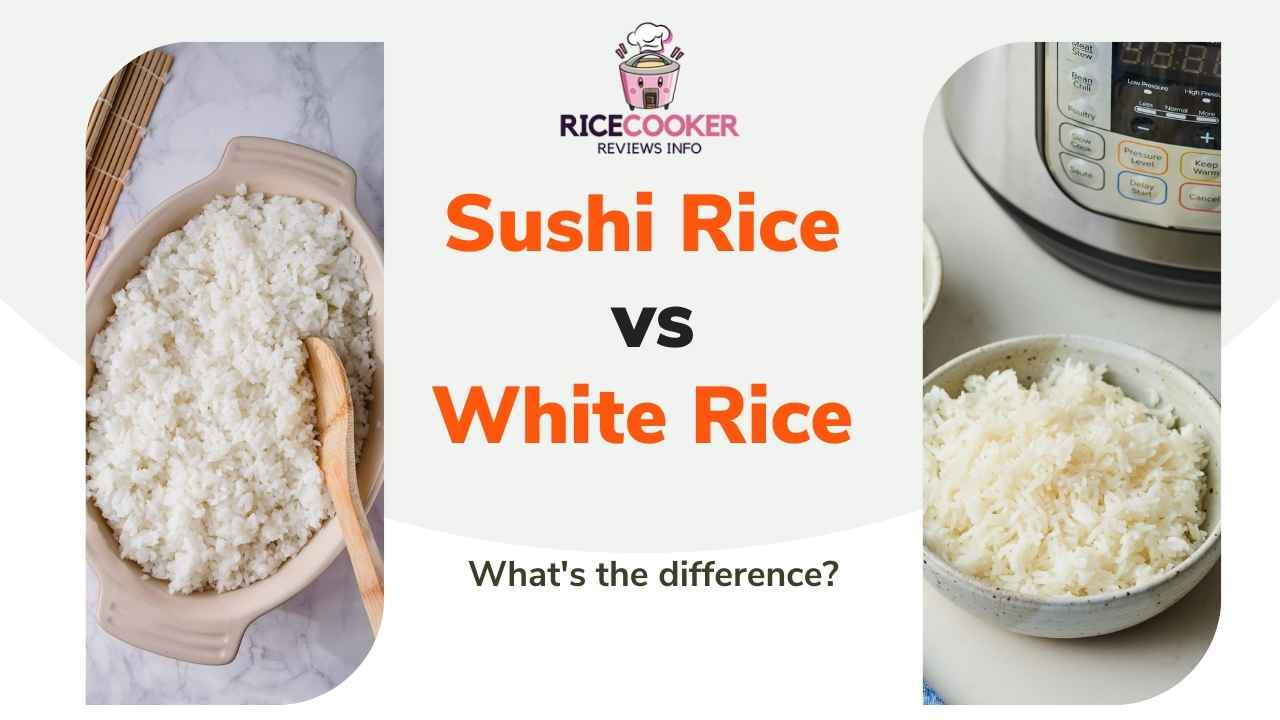The sushi rice vs white rice debate, deeply rooted in culinary history, has transcended cultural boundaries to become a global problem. Asian rice, a ubiquitous component of countless dishes, has created the perennial confusion between white rice and sushi rice. Despite encountering these grains frequently, the true distinctions often elude us.
Now you may ask, is there any difference between sushi rice and white rice? Are they not the both same?
Also Read
Best Sushi Roller for 2022
Are Sushi Rice and White Rice Identical?
The question arises in the quest for clarity: Are sushi rice and white rice essentially the same? Let’s unravel the intricacies and nuances that differentiate these two grains.
What is Sushi Rice?
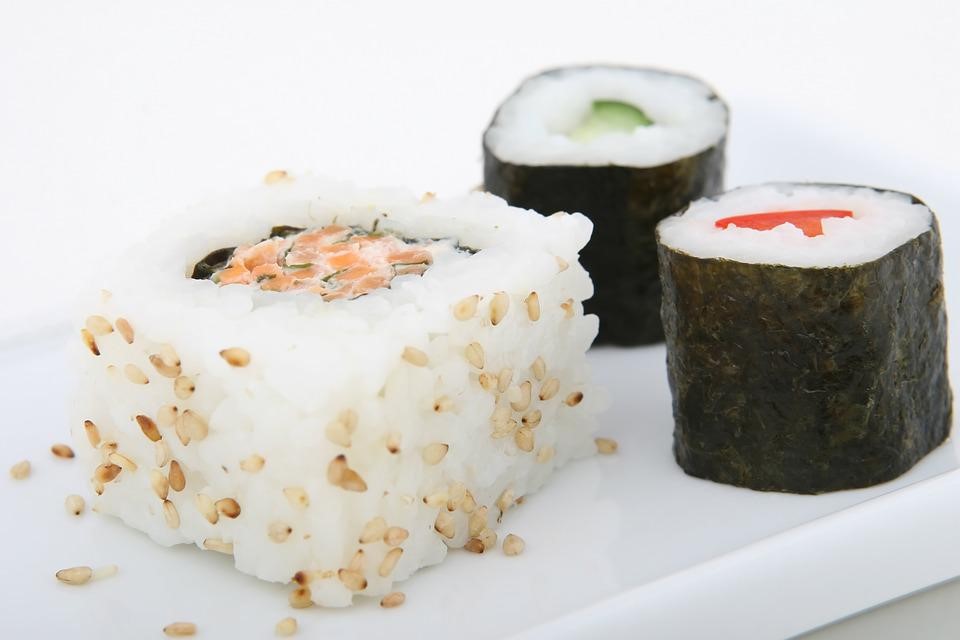
Sushi rice, with its short and sticky grains, is a cornerstone of Japanese cuisine. The unique texture, achieved through careful steaming, makes it the perfect canvas for crafting sushi. The grains, enveloped in a translucent and adhesive exterior, undergo a meticulous process of blending with vinegar and other ingredients, culminating in the creation of sushi rice balls.
What is White Rice?

On the flip side, white rice boasts medium to long grains, offering a less sticky consistency. Its versatility extends beyond sushi, finding its place in a myriad of dishes such as simple boiled rice, fried rice, biryani, pulao, and more.
Also read: Best sushi knife
Sushi Rice VS White Rice. What’s the difference between them?
| Sushi rice | White rice |
| More sticky texture and translucent | Dry and less translusant |
| Steamed well | Normally cooked |
| Short and fluffy grain | Medium to long grains |
| Seasoned with salt, vinegar, and sugar | Unseasoned |
| Used to make sushi only | Used to make various dishes |
Summary:
The significant differences between sushi and white rice have come to light in our exploration. For those aspiring to create sushi at home, sushi rice is paramount, offering a harmonious blend of salty, sour, and sweet tastes. Conversely, with its versatility, white rice serves as a canvas for an array of culinary creations beyond the realm of sushi.
Is sushi rice healthier than white rice?
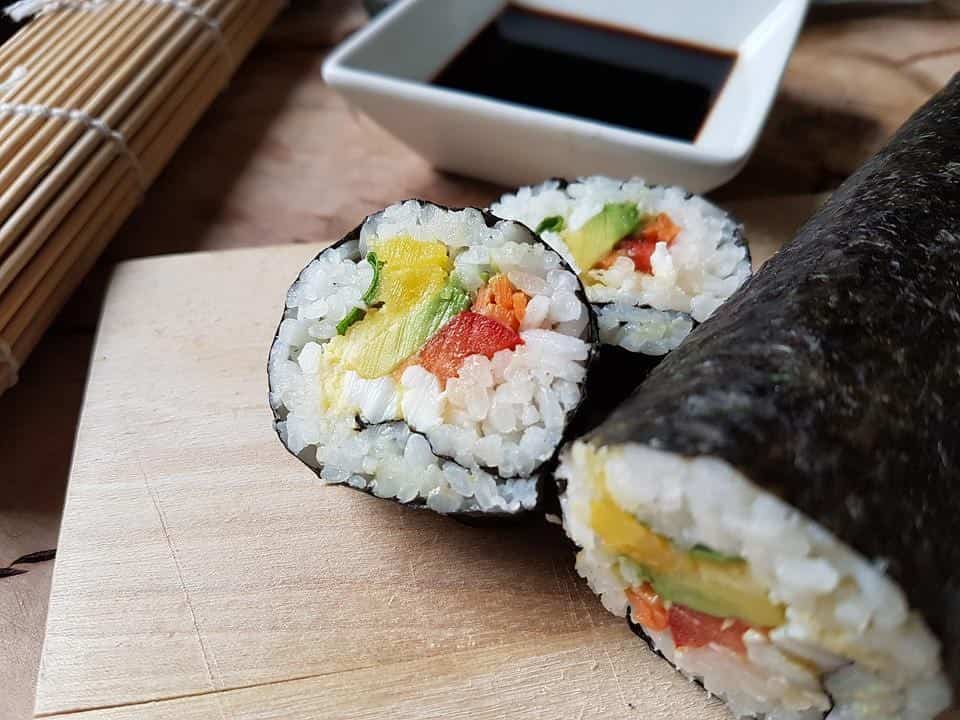
The allure of Japanese cuisine often sparks curiosity about the health benefits of its signature dish, sushi. The assumption that all Japanese food, including sushi, is inherently healthy might be a misconception. Sushi, comprised of short rice grains, shares similar health benefits with regular rice. Surprisingly, brown rice emerges as a healthier option than sushi and white rice.
Despite these nuances, when crafting sushi dishes, the recommendation leans toward using sushi rice due to its stickier and fluffier nature. However, it’s crucial to note that while enhancing the sushi experience, short-grain rice carries a significant starch content, making it less supportive for weight loss.
Gauging Nutritional Values: Sushi Rice vs White Rice
Delving into the nutritional realm, a detailed comparison based on FDC search results sheds light on the calorie content per 100 grams of sushi and white rice serving.
| Nutrient name | Sushi rice | White rice |
| Protein | 2.92g | 1.42g |
| Fat | 0.67g | 0.15g |
| Carbohydrates | 18.4g | 14.84g |
| Dietary fibers | 1g | 0.2g |
| Calcium | 0.9mg | 5mg |
| Sodium | 428mg | 1mg |
| Cholesterol | 4mg | 0mg |
While sushi rice and white rice contain substantial carbohydrates and minimal protein, sushi rice’s starch and refined carbohydrate content results in lower calcium and sodium levels. Notably, the cholesterol content in sushi rice is four times higher than that in white rice, positioning white rice as the healthier option from a nutritional standpoint.
How to make perfect sushi rice?
For those inclined to master the art of sushi making at home, the journey begins with selecting the right rice. Short-grain Japanese rice, labelled “sushi rice,” is the foundation for crafting perfect sushi rice balls. Enriched with glutinous content and ample starch, this rice variety guarantees a fluffier, softer, and stickier texture ideal for sushi preparation.
- White sugar
- Rice vinegar
- Salt
- Vegetable oil
Preparation for Sushi Rice:
- Wash 1 cup of sushi rice thoroughly.
- In a pan, add 2 portions of water and 1 portion of rice. Bring to a boil, now lower the heat, cover the pan, & let the rice fully absorb water. Turn off the flame when the rice is fully soft.
- In another pan, combine 2 tablespoons of rice vinegar, 1 tablespoon of oil, and 1 tablespoon of sugar. Cook the mixture on low heat until the sugar dissolves completely.
- Pour the mixture over steamed rice and stir well. Though initially wet, the mixture will become sticky and dry when cooled.
- Your sushi rice is ready. Form sushi rice balls by wrapping them in sheets of nori. Decorate the balls with salmon, fish and avocado, serving them with sauce.
Here’s the final look at our Sushi rice balls:
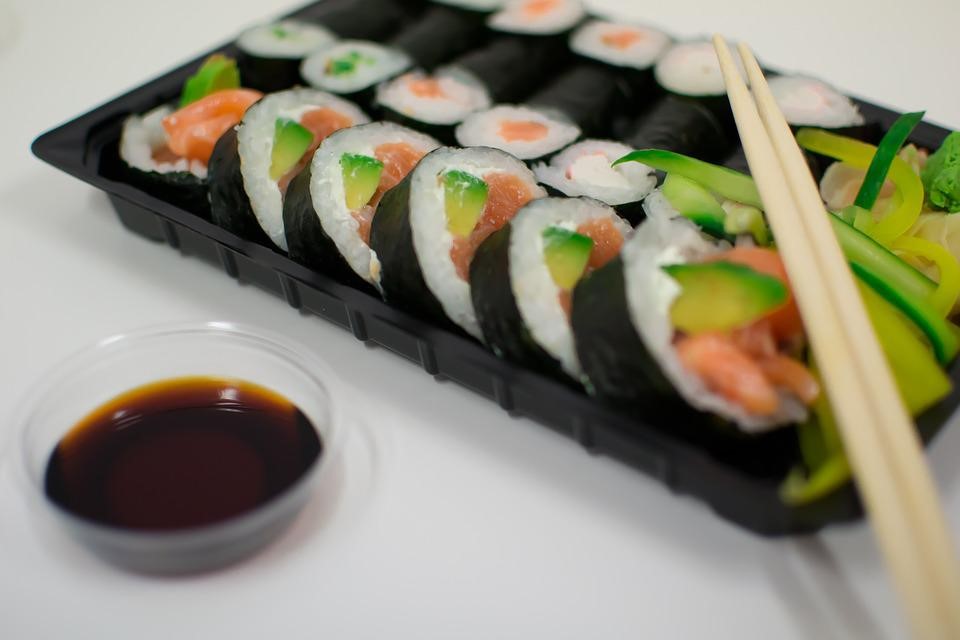
How to increase the nutritional value of sushi rice?
Sushi rice, often hailed as a low-calorie option, faces challenges when prepared with excessive sauces and spices, diminishing its nutritional value. To enhance its health benefits, consider the following tips:
- Choose brown rice: Opt for brown rice instead of traditional sushi or white rice, as it boasts higher fibre content, elevating the meal’s nutritional value.
- Use soy sauce as a side dish: Given that soy sauce is sodium-enriched and can pose health concerns, utilize it as a side dish. Dip your sushi into the sauce for flavor without compromising nutritional integrity.
- Low-fat sushi: Avoid incorporating fats like mayonnaise, creams, or cheese into your sushi, as they increase calorie content. Keep the dish simple and healthy by following the weight-loss sushi rice recipe discussed earlier.
- Healthy side dishes: Accompany your sushi with nutritious side dishes such as ginger pickles, edamame beans, and wasabi. Consider incorporating miso soup as a healthy alternative to relying solely on soy sauce for flavor.
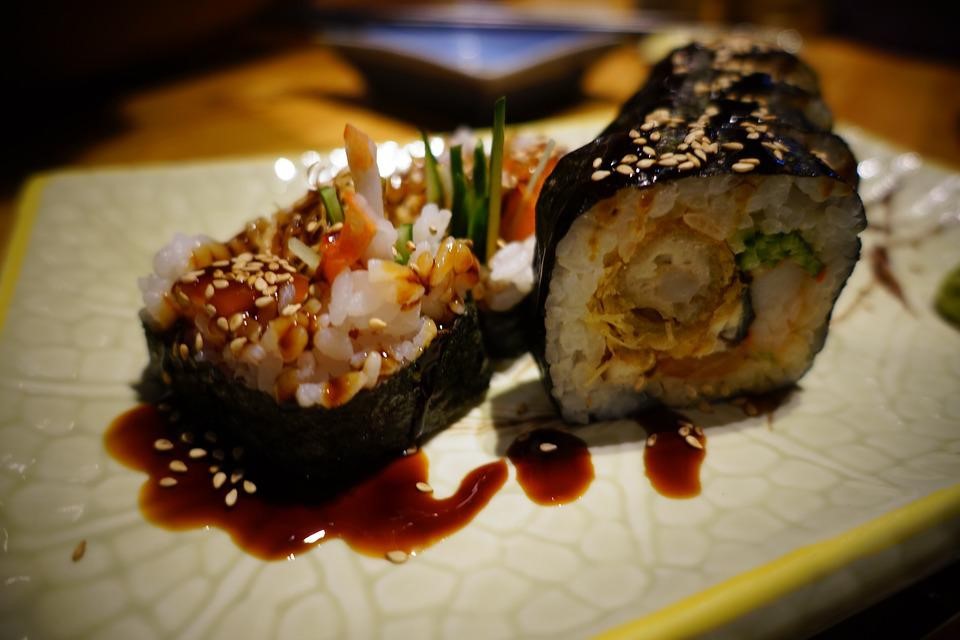
FAQs:
Is sushi rice healthy for weight loss?
Absolutely. A typical Japanese sushi rice dish is low in calories and fat, making it a healthy option for those fitness experts on a weight loss journey. Prepared with minimal ingredients and without frying in oil and mayonnaise, it aligns well with dietary goals.
How to make sushi rice with regular rice?
Achieving the exact results with ordinary rice for sushi is challenging. White rice lacks the stickiness and fluffiness inherent to sushi rice, compromising the dish’s authenticity.
Can I use white rice for sushi?
No. Japanese sushi rice, characterized by its sticky, short, and translucent nature, is the only suitable rice for crafting professional sushi. White rice, with its different texture and size, does not fulfill the criteria for authentic sushi preparation.
Is white rice similar to sushi rice?
No, they differ significantly. Sushi rice, with its short grain and greater transparency, contrasts with white rice’s long to medium size and reduced translucency. Each serves distinct culinary purposes.
Is Japanese sushi rice healthy?
Yes, Japanese sushi rice boasts higher nutritional content, containing only 90 calories per 14 cups. Furthermore, it is an excellent source of iron and potassium.
Conclusion:
In our culinary odyssey exploring the realms of sushi rice vs white rice, we’ve uncovered the nuances that make each unique. Sushi rice, revered for crafting exquisite sushi, offers a sensory experience with a texture and flavor profile distinct from white rice. Despite its role in creating iconic dishes, sushi rice, when analyzed nutritionally, leans toward lower health benefits than white rice.
While sushi rice can be a delightful option for weight loss when prepared mindfully, white rice emerges as the healthier choice overall. The key lies in understanding their textural differences and leveraging each rice type’s inherent qualities for diverse culinary creations.
Whether embarking on a sushi-making adventure or exploring the vast world of rice-based recipes, the choice between sushi rice and white rice now stands as a well-informed decision, guided by a deeper understanding of their characteristics and applications. If you still have lingering questions or insights on Sushi Rice vs White Rice, share them in the comment section below for a continued culinary conversation.

